Small overlap front: driver-side
Rating applies to 2013-17 models
Tested vehicle: 2013 Volvo XC60 3.2 4-door 4wd
The Volvo XC60 was introduced in the 2010 model year. Beginning with 2013 models, the side curtain airbags were reprogrammed to deploy in small overlap frontal crashes to improve occupant protection.
| Evaluation criteria | Rating |
|---|---|
| Structure and safety cage | |
| Driver injury measures | |
| Head/neck | |
| Chest | |
| Hip/thigh | |
| Lower leg/foot | |
| Driver restraints and dummy kinematics | |
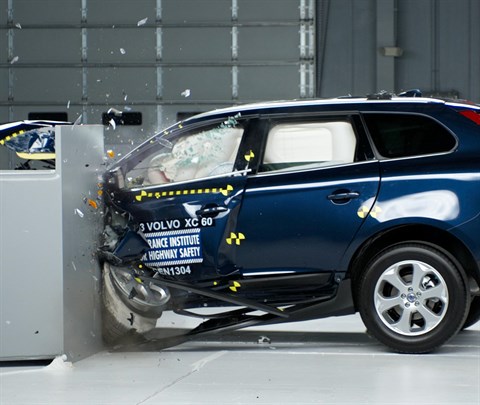
Action shot taken during the small overlap frontal crash test.

The dummy's position in relation to the door frame, steering wheel, and instrument panel after the crash test indicates that the driver's survival space was maintained very well.
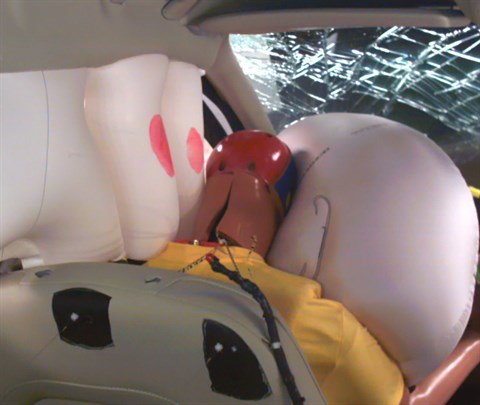
The frontal and side curtain airbags worked well together to keep the head from coming close to any stiff structure or outside objects that could cause injury.
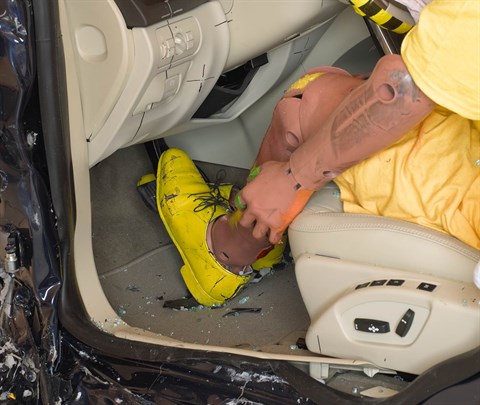
Intrusion into the driver's space was minimal, and risk of injuries to the dummy's legs and feet was low.
Moderate overlap front: original test
Rating applies to 2010-17 models
Tested vehicle: 2010 Volvo XC60 3.2 4-door 4wd
The Volvo XC60 was introduced in the 2010 model year.
| Evaluation criteria | Rating |
|---|---|
| Overall evaluation | |
| Structure and safety cage | |
| Driver injury measures | |
| Head/neck | |
| Chest | |
| Leg/foot, left | |
| Leg/foot, right | |
| Driver restraints and dummy kinematics | |
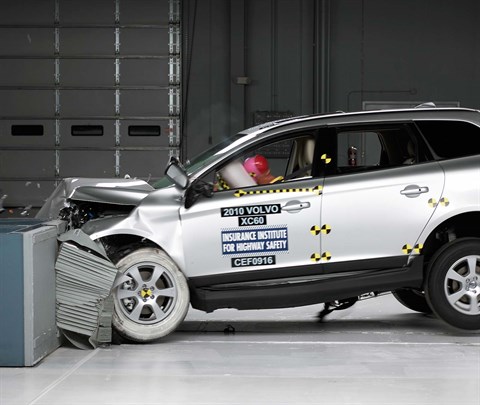
Action shot taken during the frontal offset crash test.
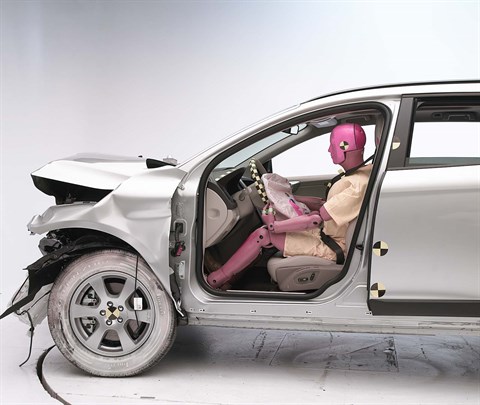
The dummy's position in relation to the steering wheel and instrument panel after the crash test indicates that the driver's survival space was maintained very well.

Smeared greasepaint indicates where the dummy's head hit the roof rail during rebound. Head acceleration from this hit was low.

Intrusion into the driver's space was minimal, and all leg and foot injury measures were low.
Side: original test
Rating applies to 2010-17 models
Tested vehicle: 2010 Volvo XC60 3.2 4-door 4wd with standard front and rear head curtain airbags and standard front seat-mounted torso airbags
The Volvo XC60 was introduced in the 2010 model year.
During the test, the lower side seat trim was pushed against a service release button for the safety belt, which then detached from its anchor on the outboard side of the driver's seat. Although there was no unusual movement of the dummy, the dummy was not restrained during part of the crash event. Volvo has addressed the problem on models built after November 2009 and is issuing a recall to fix the belts on cars built earlier.
Cars built before the fix and subsequently not repaired would be rated only Acceptable and would not be eligible for TOP SAFETY PICK status.
| Evaluation criteria | Rating |
|---|---|
| Overall evaluation | |
| Structure and safety cage | |
| Driver injury measures | |
| Head/neck | |
| Torso | |
| Pelvis/leg | |
| Driver head protection | |
| Rear passenger injury measures | |
| Head/neck | |
| Torso | |
| Pelvis/leg | |
| Rear passenger head protection | |
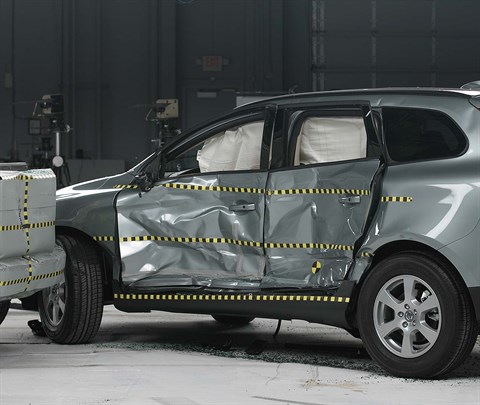
View of the vehicle and barrier just after the crash test.
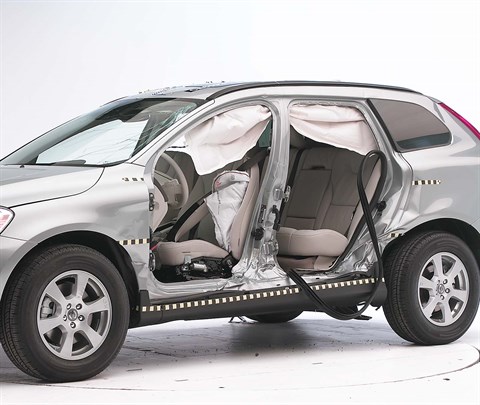
View of the vehicle after the crash with doors removed, showing the side airbags and damage to the occupant compartment.
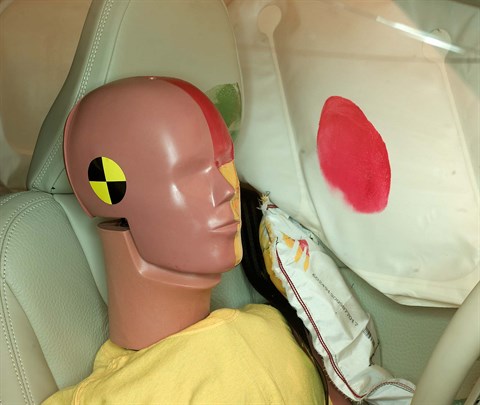
The driver dummy's head (shown) was protected from being hit by hard structures by the side airbags. The rear passenger dummy's head was protected by the side curtain airbag.
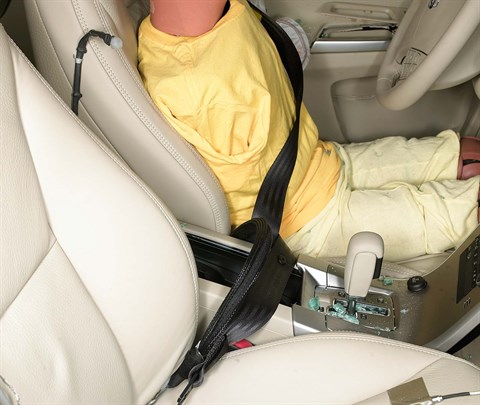
During the crash, the lap portion of the driver dummy's lap/shoulder belt detached from its anchorage near the door and moved into the passenger's seat. Volvo is conducting a recall to fix the seat belt anchorage.
Roof strength
Rating applies to 2010-17 models
Tested vehicle: 2010 Volvo XC60 3.2 4-door 4wd
| Overall evaluation | |
|---|---|
| Curb weight | 4,172 lbs |
| Peak force | 21,828 lbs |
| Strength-to-weight ratio | 5.23 |
Head restraints & seats
Seat type: All seats
| Overall evaluation | |
|---|---|
| Dynamic rating | |
| Seat/head restraint geometry |
About the head restraint & seat test
Currently, IIHS tests apply only to front seats.
Front crash prevention: vehicle-to-vehicle
Ratings are given for 2 different trim variations available on this vehicle.
